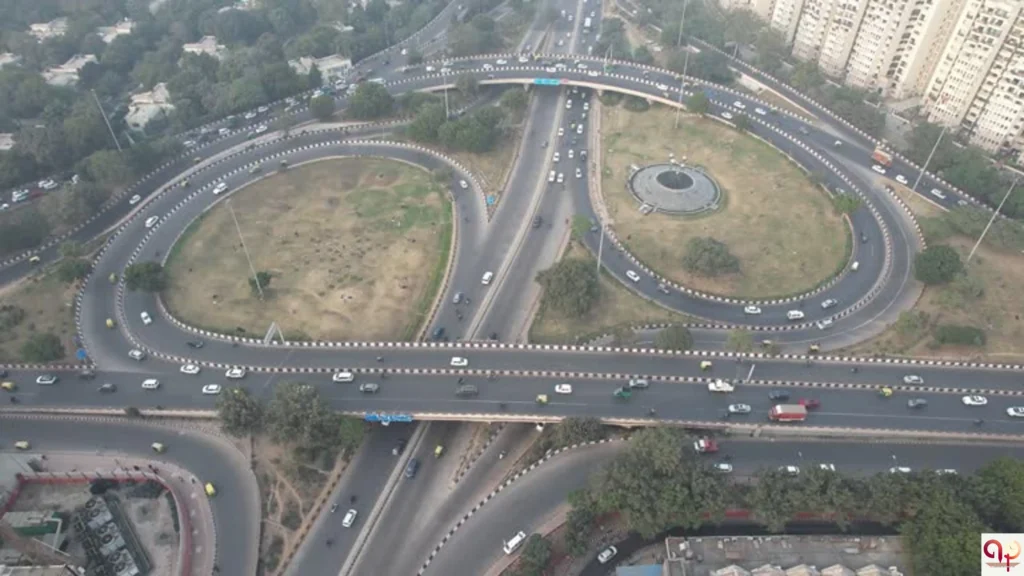Delhi Flyover Repairs Begin Amid Crumbling Infrastructure, Commuter Woes
Delhi’s once-celebrated network of flyovers—built to ease urban mobility in the early 2000s—is now showing signs of age, prompting a citywide repair drive led by the Public Works Department (PWD). With several structures in use for over two decades and minimal major maintenance conducted over the years, the capital is entering a crucial phase of infrastructure rehabilitation.

As per official estimates, Delhi currently has over 102 flyovers and bridges, many of which were developed during the tenure of the Sheila Dikshit government in preparation for the 2010 Commonwealth Games. Key flyovers constructed during that period include AIIMS (2003), Nehru Place (2001), Raja Garden (2001), Savitri (2001), and Mukarba Chowk (2008), among others.
Now, over 17 flyovers, including Sarita Vihar, Shahdara, Chirag Delhi, and Loni Road, have been earmarked for structural repairs. The recent commencement of work on the Sarita Vihar flyover, built in 2001, marks the beginning of a broader maintenance initiative. PWD officials have confirmed that most of these structures have not seen significant repair since their inauguration.
Delays and Disruptions Expected
The repair work focuses primarily on the replacement of expansion joints and elastomeric bearings, both critical to handling stress, vibrations, and thermal changes caused by continuous vehicular movement. Additional issues such as spalled concrete, honeycombing, and damaged noise barriers will also be addressed.
The maintenance drive has already caused traffic disruptions. Past closures—like the repair of the Chirag Delhi flyover in April 2023—sparked significant congestion and public criticism. Authorities are now being urged to ensure that multiple flyovers along the same corridor are not closed simultaneously.
According to Dr. S. Velmurugan, Chief Scientist at the Central Road Research Institute (CRRI), “Flyover repair needs to be periodic, but proper traffic planning is essential. Closures should not overlap on the same route, and detailed advisories must be issued to commuters.”
Also Read: Delhi-Gurgaon in 30 Minutes: Nitin Gadkari Unveils Ambitious Plan to Tackle Capital’s Traffic Woes
Infrastructure at a Crossroads
The need for this repair phase stems from both wear-and-tear and past oversight. Residents note that while flyovers were intended to ease congestion, several were poorly designed or inadequately planned for future growth. The Punjabi Bagh flyover had to be expanded, and the one-lane Savitri flyover continues to strain south Delhi traffic.
In the 1970s and 1980s, as Delhi’s population and vehicle count soared, flyovers were first introduced to ease bottlenecks. The Shadipur flyover, built in 1971 and one of Delhi’s oldest, and others like the IP Estate and Moolchand flyovers, marked the early years of grade-separated road infrastructure.
Budget and Outlook
The Delhi government has allocated over ₹3,800 crore in its 2025–26 budget for the development and repair of roads and bridges. Following a March 3 directive, PWD initiated inspections across its flyover portfolio to prioritize repairs. Besides structural fixes, additional work includes removing encroachments, upgrading central verges, and installing modern noise barriers and view cutters.
As Delhi embarks on this next phase of urban maintenance, the challenge will lie in balancing repair schedules with the daily needs of its commuters. With traffic already burdening most arterial roads, careful planning and execution will be key to ensuring the city remains on the move while its vital infrastructure gets a much-needed overhaul.
